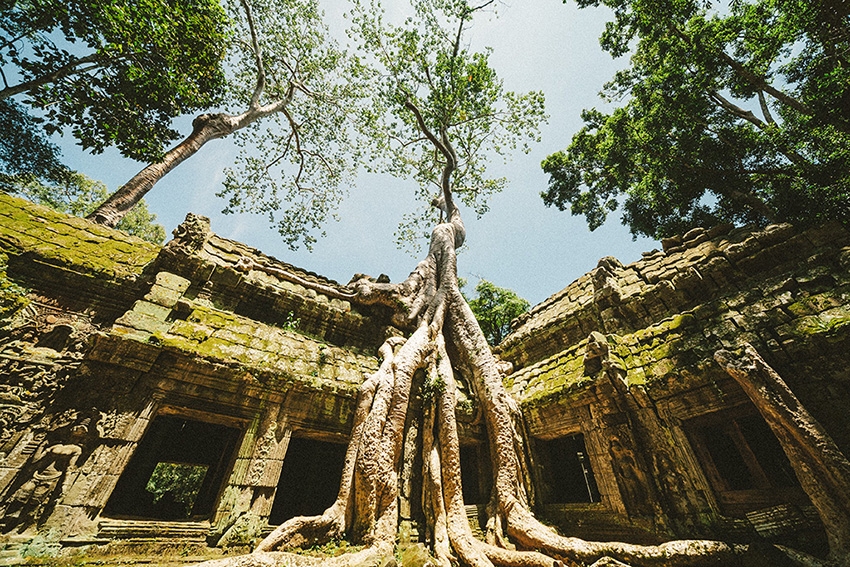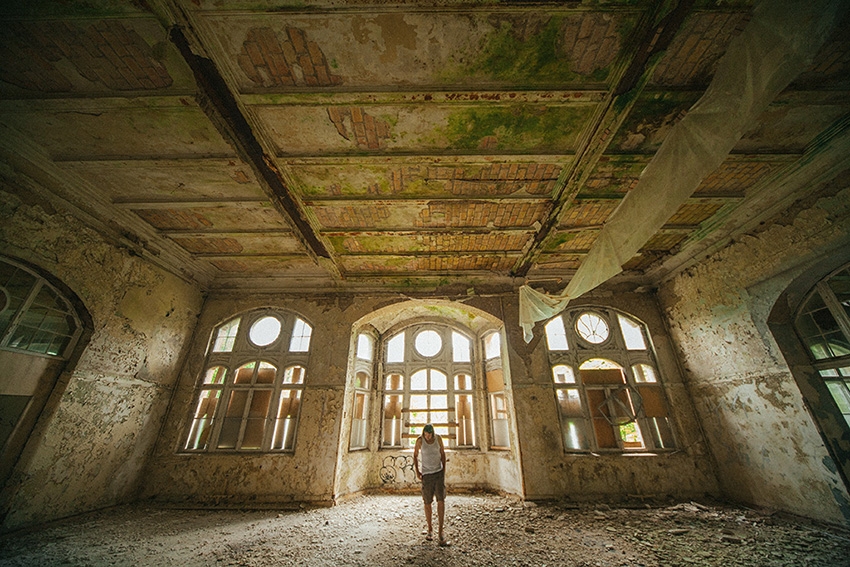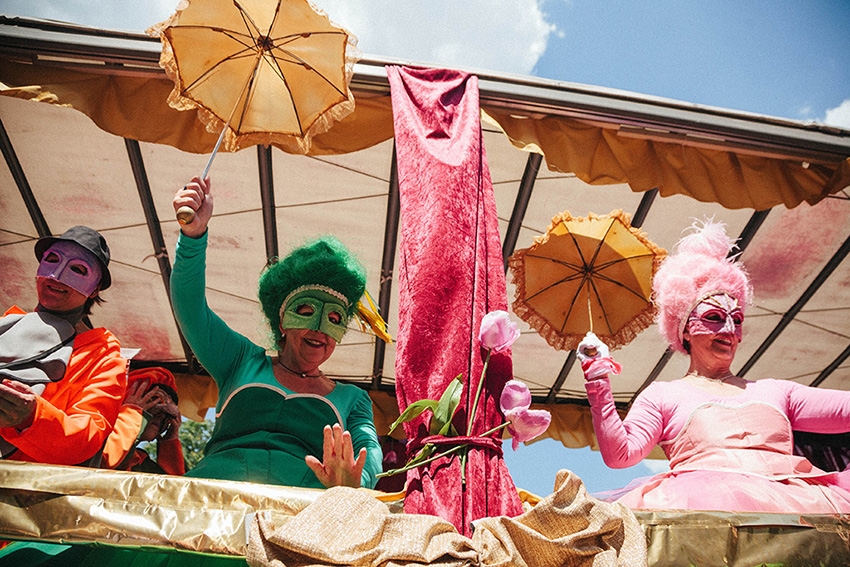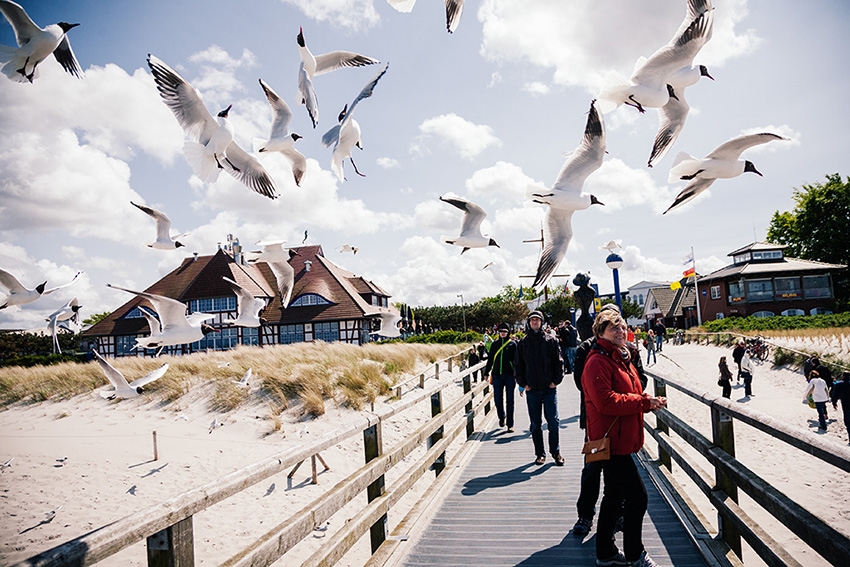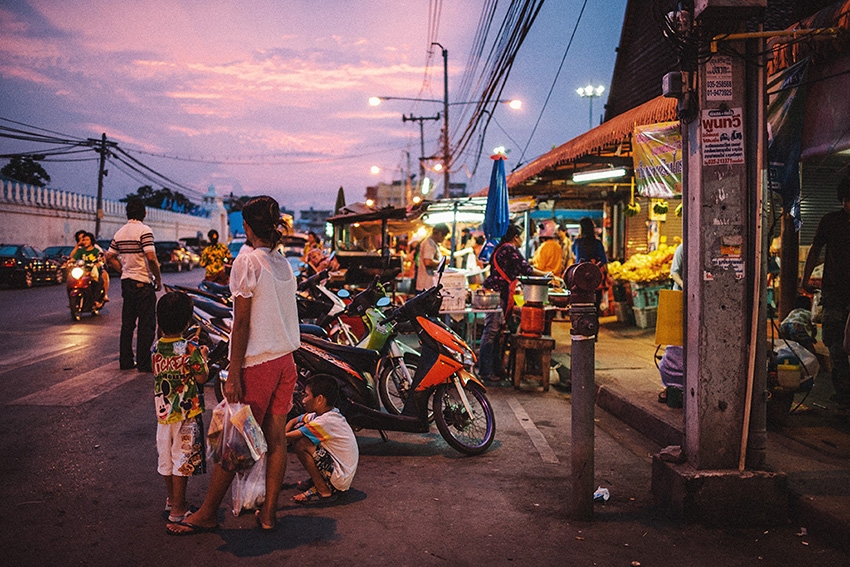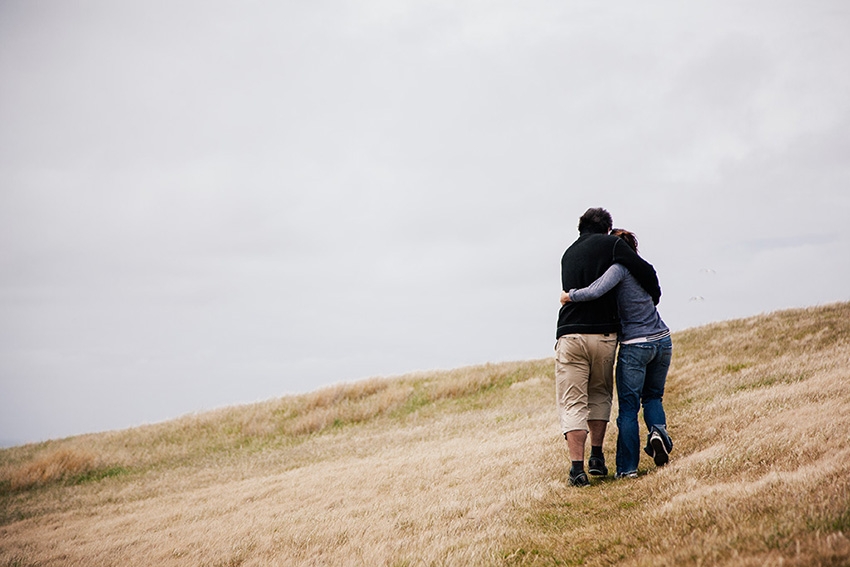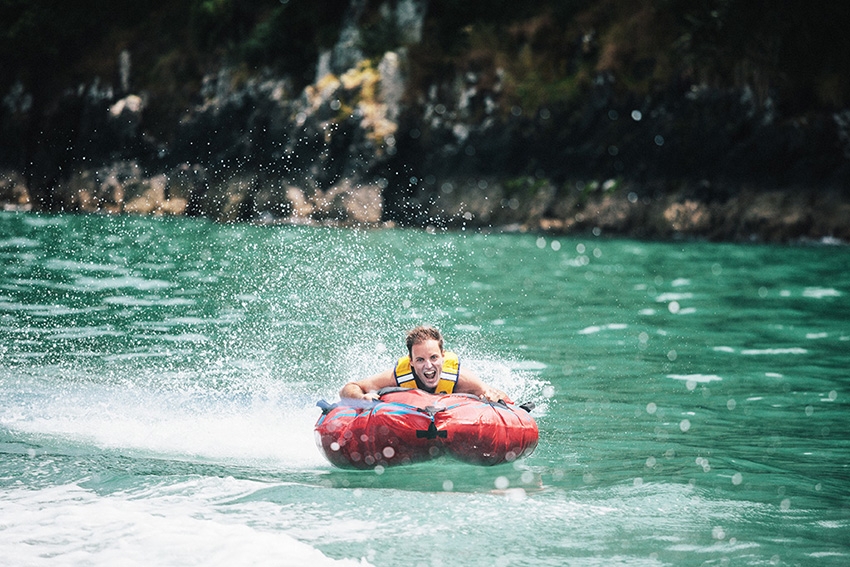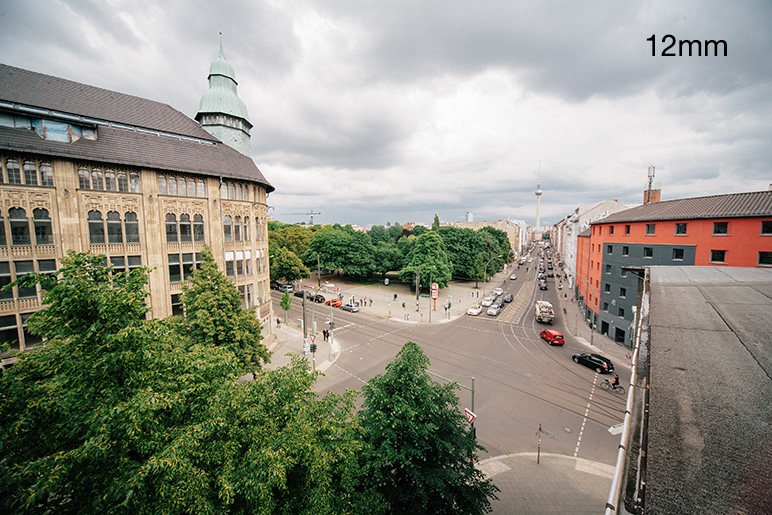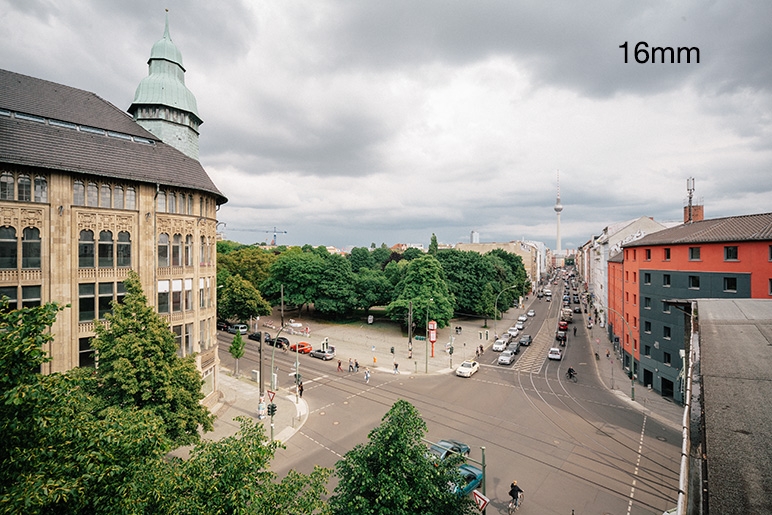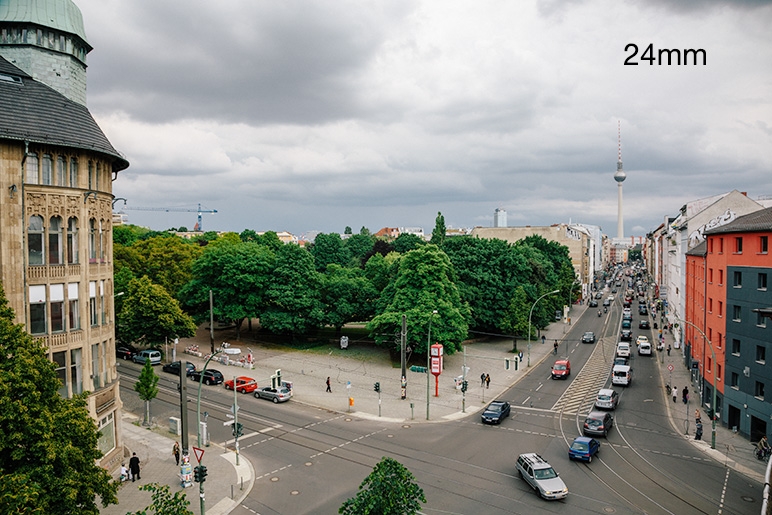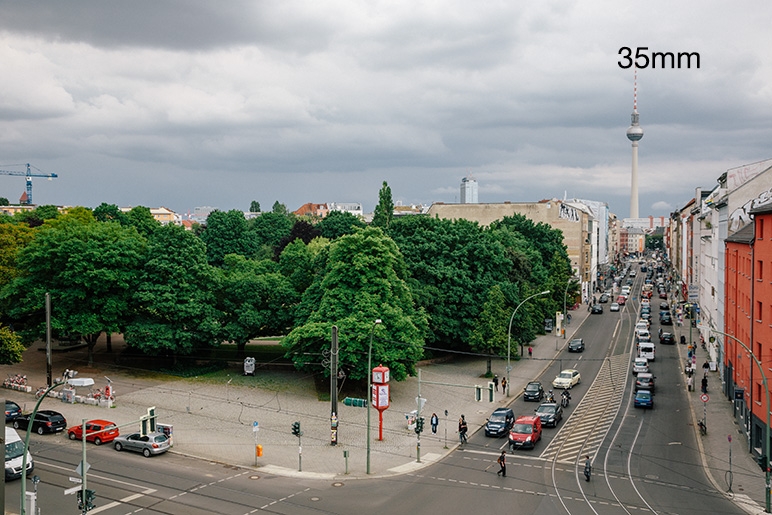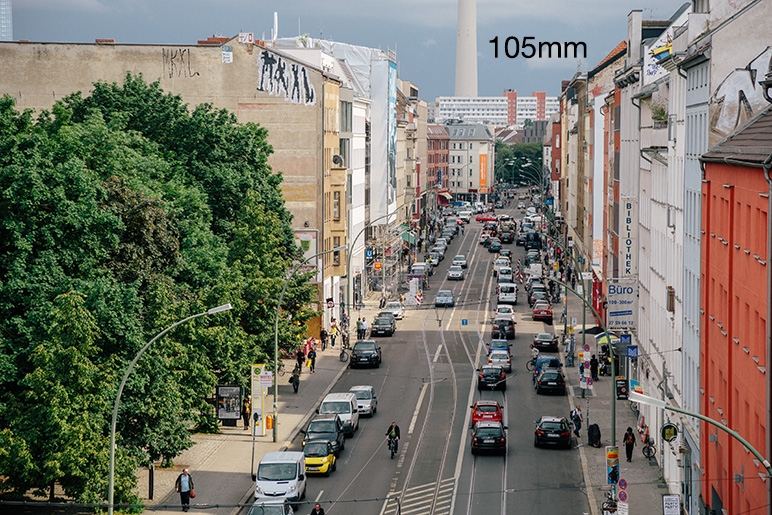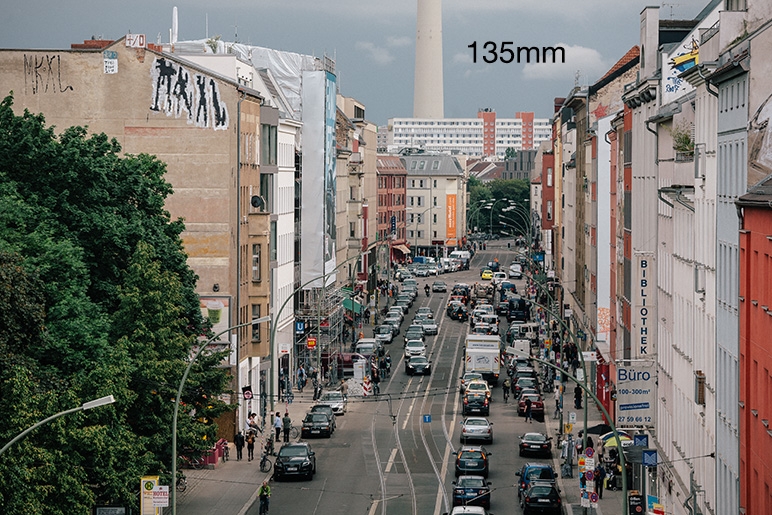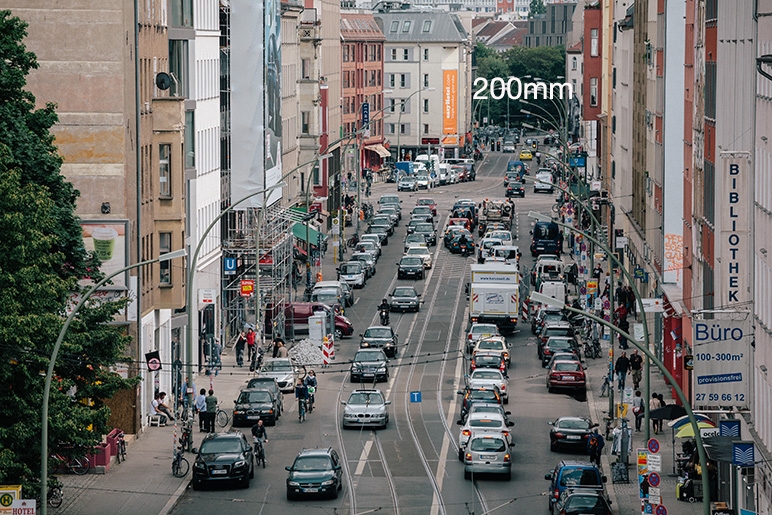Hi there, first I have to say that I changed plans a bit because I will sometimes not be able to stick with the topic to the exact same day every week. I found it especially impossible to write legal articles without my books at hand, for example when I'm travelling. So as this blog focuses on photography there will be some weeks where I post more articles with new photos and those related to cameras and techniques. I will try, though, to switch to society and law in other weeks therefor a bit more.
Today I want to talk about digital noise and why it is important to modern photography. First of all, what is digital noise? Digital noise appears in digital photos sometimes when there is not enough light available, mostly in dim situations or at night. You can easily spot it in a photo as colour blotches and grittiness, the images is not as clean as those photos taken in bright daylight.
Why is it that way? You can compare digital noise to the grain in film photography. The bigger the grain in film was, the more sensitive it was to light, so the dimmer the surrounding could be in which you were going to take a sharp photo in. In digital cameras the film is replaced by a digital sensor of different sizes, actually a silicon chip with millions of little pixels, themselves comparable to the grain in film. Film sensitivities are expressed in ISO values, that's the same in digital. The higher the number the more sensitive now the digital sensor. ISO values normally alter in doubling steps, f.e. shooting in daylight is perfectly fine with ISO 100 with every possible camera. ISO 200 f.e. is double the sensitivity of ISO 100, so you can shoot with half the available light or with double the shutter speeds. It's getting interesting when you need to change to settings of ISO 1600 and above, because then big DSLR have a clear edge in image noise. But are the pixels getting bigger, too, like the film grain with rising sensitivity? No, they stay the same size, the higher sensitivity is achieved by amplifying the signal the sensor reads out from each pixel that collects the light. Complicated? Well, it's actually quite simple. Compare it to an audio amplifier. When you had a really muted recording on a Compact Cassette you had to increase the volume of the amplifier, that way the noise was getting louder, too. With a digital sensor it's the same, when you have only very little light available and recorded by the sensor, it needs to be amplified a lot. That way all steps during digital image processing that add noise to the image get amplified as well, for example the noise from the circuitry of the sensor, from heat, base noise levels and more.
Put simple, the lower the light the noisier the image. What can you do about it? First, to be honest, noise has never really been a problem for me, in film more grain could even add some atmosphere to the image and I find myself delibirately adding grain afterwards to an image that was clean in the first place. People are different, though, and there are situations where noise is not desired, for example in the church when you shoot the wedding couple kissing. It's always great to bring back clean images from situations you wouldn't have thought they were possible. Still, it's always a question of personal acceptance. Higher sensitivities also allow for higher shutter speeds, needed to freeze people's motions. Shooting in a dark room without flash you need very high ISO values to retain fast enough shutter speeds to not get blurry images. Image stabilizers for example let you shoot stationary subjects with longer shutter speeds but they can't help when shooting people in dim light.
On the other hand it really depends on when you find noise in an image obtrusive. Women often don't care about things like noise and I have to agree, when you take a great photo its noise levels become secondary. Still, easy things to consider when chosing a camera and lens combination to shoot people in dim light are: The bigger the sensor the lower the noise levels, DSLRs have sensors sometimes 10 or 20 times larger than a normal point and shoot. I show you what I mean. The following images are taken with a premium compact, a Panasonic LX7, that has a bigger sensor than normal compacts (7,44mm vs. 6,17mm) and a DSLR, a Canon 5D Mark III with a sensor 21 times bigger (36mm). Both where shot at the same shutter speeds, aperture levels and a very high sensitivity of ISO 3200. The above image is from the point and shoot, the lower one from the DSLR ...
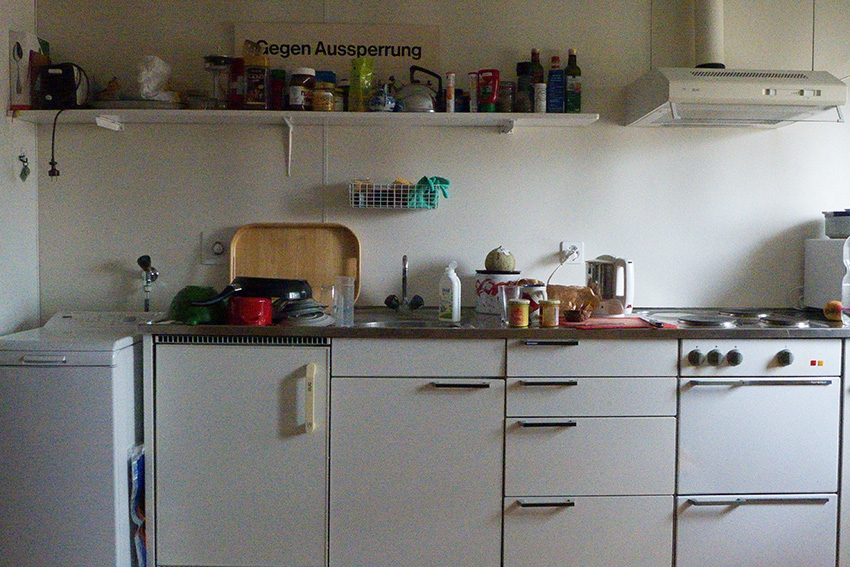
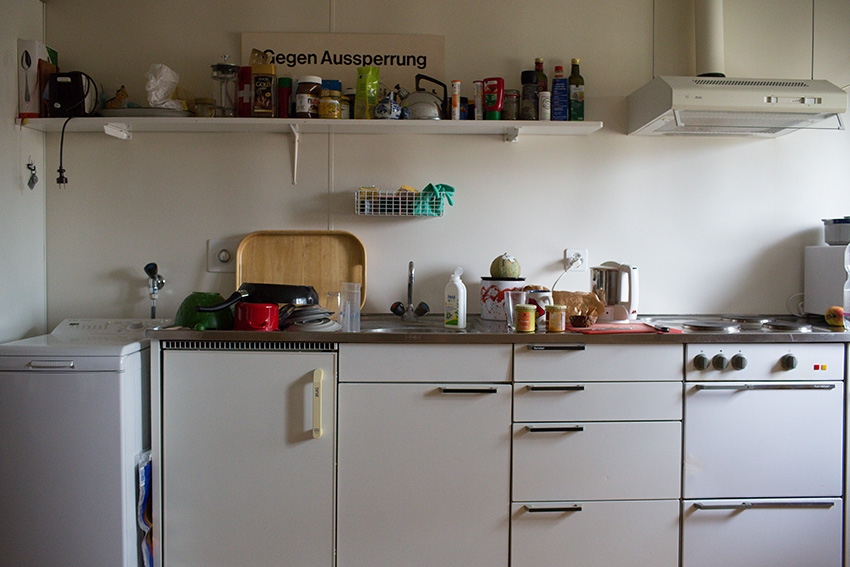
And here are the two at a pixel level ...
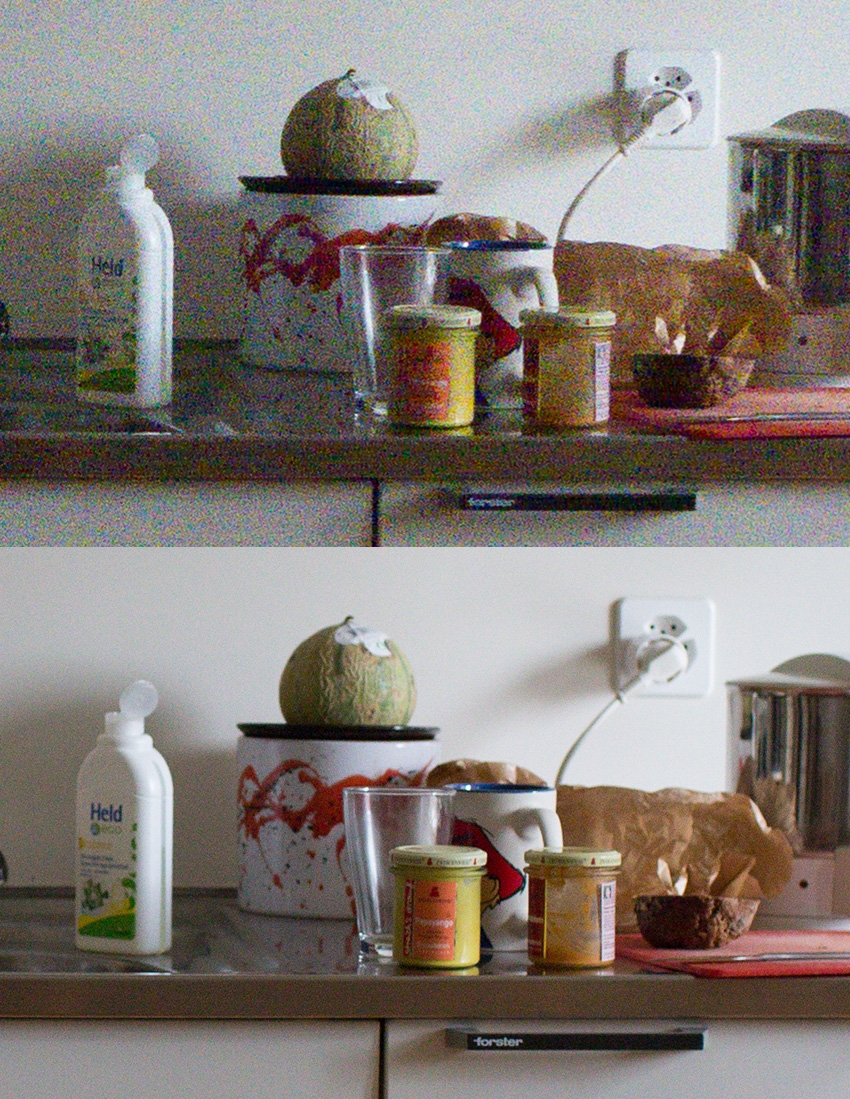
As you can see you get much cleaner images with a big camera. But you can also make great images with a small one, it lies in the eye of the beholder. To give you a perspective I will shoot the Canon with an ISO level of 25600, 8 times more sensitive to light, have a look how they compare now ...
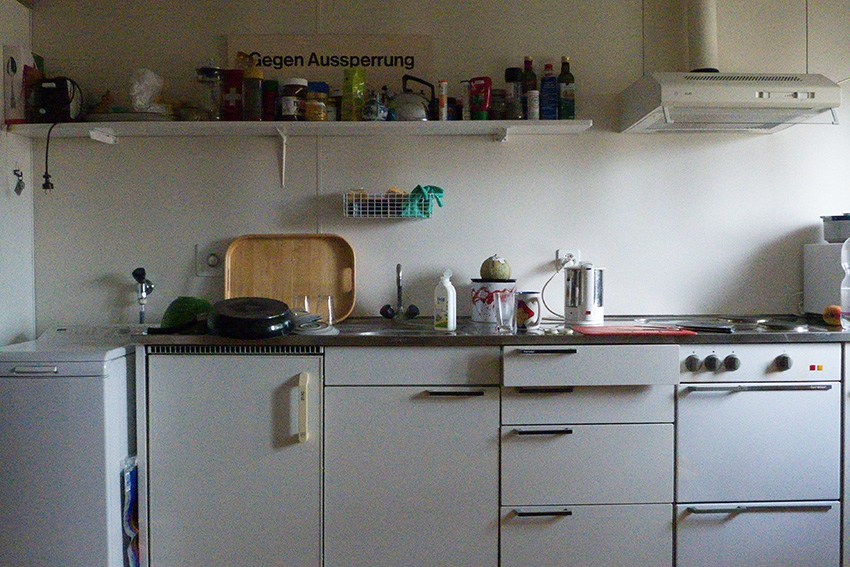
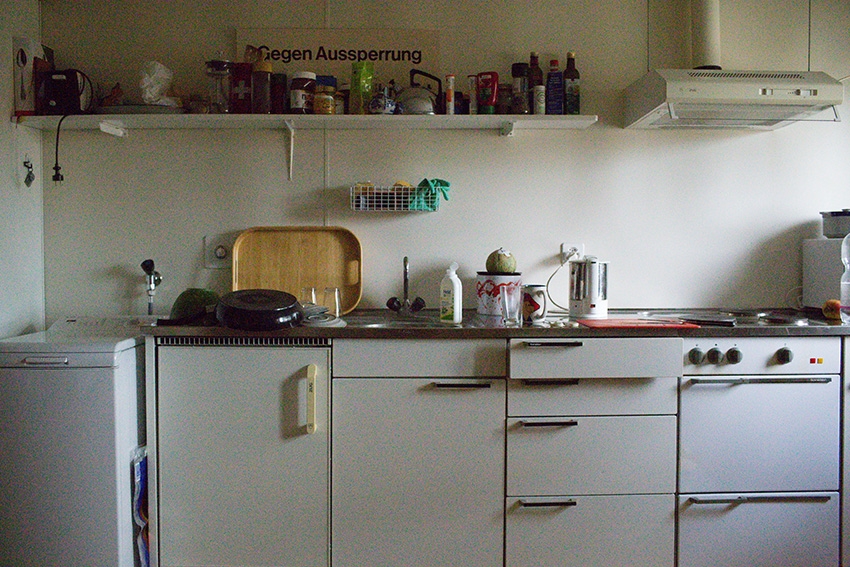
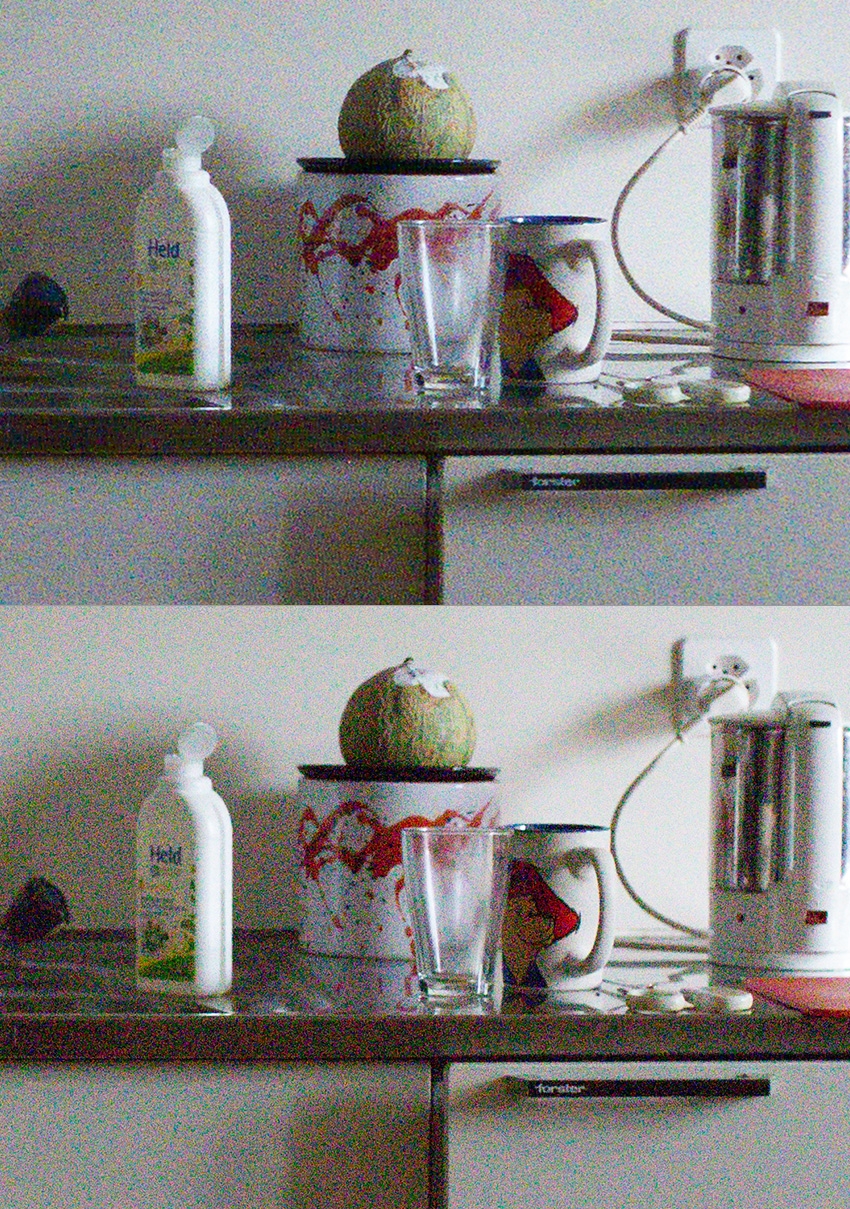
Noise levels are quite comparable with the 5D being sharper because it got more pixels. Referring to noise this means you can shoot with the same shutter speed in light levels 8 times darker or you can shoot with 8 times the shutter speed in the same light levels, here a 1/400s with the LX7 and a 1/3200s with the 5D. Pretty cool, huh!?
Second very important thing to consider for noise free images are fast lenses. Most zoom lenses already start slow and get even slower when zooming in. By slow I mean the shutter speed needed to let in the same light to the sensor. Those zooms often start at an aperture value of f/4 and slow down to f/5.6. What does that mean? Well, I will talk about shutter speeds and apertures another time but imagine the aperture of a lens as the pupil in the human eye, the smaller the pupil the less light gets in or the lower the light the bigger the pupil gets. It's the same with lenses, different lenses have different maximum aperture values, slow zoom lenses being quite dark. When you shoot in dim light you need slow shutter speeds to compensate for the little light coming through the lens, thus you get blurrier images of people or you need to increase the ISO level and get noisier images. Take a fast prime lens and you get more light to hit the sensor, that way you can retain fast enough shutter speeds to freeze people's motions or/and need a lower ISO level and get less noisy images. For example when you zoom in your zoom lens to shoot a portrait your lens aperture becomes a quite small f/5.6 at 55mm. Take a 50mm prime lens, that only costs 120 €, you get an aperture value of f/1.8. That's over three times the aperture value compared to the zoom, means over 8 times more light comes through the lens, you may shoot in 8 times lower light levels with the same shutter speed or you can shoot with 8 times the shutter speed in the same light. This gives you the ability to shoot with lower ISO levels and still get faster shutter speeds to stop motion. For example, when you shoot your slow zoom at 55mm f/5.6 with ISO 3200 in a bar your shutter speed could be a slow 1/30s, too slow to freeze motion and also too slow to compensate for camera shake. If you put on your 50mm prime and shoot at f/1.8 you could alter shutter speed to a 1/80s, fast enough to freeze motion in portraits and fast enough to compensate for camera shake. And you can set the ISO down to 800 and still get the same bright images as with the zoom with much less noise in it. Cool, eh? So, if you don't like noise, buy a camera with a big sensor and a fast lens and you're set to shoot in dim light without flash.
Alright, now you should understand what digital noise means and what effect it has on your images.
See you next time
KIKI
